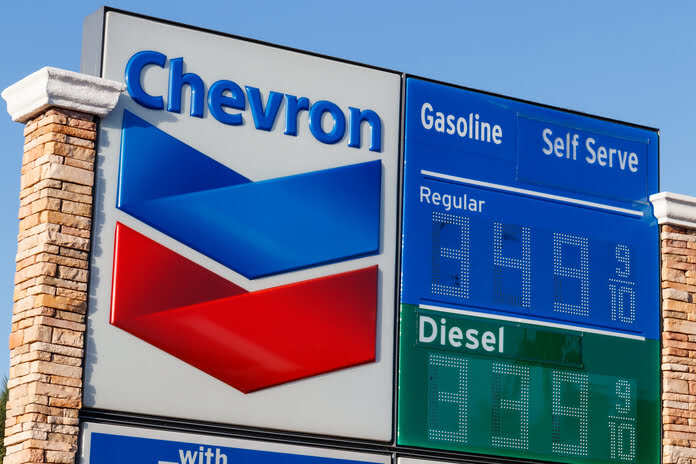In a bold and strategic move, Chevron (NYSE:CVX) has recently announced its acquisition of Hess (NYSE:HES) in an all-stock transaction, with each Hess shareholder receiving 1.025 shares of Chevron for each Hess share. This deal, valued at $60 billion, including debt, marks a significant step in Chevron’s quest to secure a prominent position in the South American nation of Guyana, one of the world’s emerging oil producers.
While some may argue that Chevron’s offer carries a relatively small premium for Hess, this is largely due to Hess shares trading near their all-time high. The acquisition is expected to accelerate production growth and offer more attractive returns for Chevron’s investors.
This acquisition is the second major deal in the oil industry within a short span, following ExxonMobil’s agreement to acquire Pioneer Natural Resources for $60 billion-plus debt. These transactions underscore the belief of U.S. energy giants in the continued centrality of oil and natural gas in the global energy landscape, and they are reminiscent of the mega-mergers that shaped the industry in the late 1990s and early 2000s.
Globally, the oil and gas industry has seen $254 billion worth of merger and acquisition deals announced this year, marking the highest year-to-date total since 2014.
The Significance of the Hess Deal for Chevron
The acquisition not only adds acreage in the Gulf of Mexico and the Bakken shale basin but, more importantly, it grants Chevron access to Guyana, a former British colony in South America. Guyana’s fortunes have transformed since ExxonMobil’s discovery of significant offshore oil reserves in 2015. Today, it stands as one of Latin America’s top oil producers, surpassed only by Brazil and Mexico.
Crude oil production in Guyana began in 2019 and has been rapidly increasing. The country’s production, which was virtually nonexistent before 2019, averaged 260,000 barrels per day in the previous year and is projected to approach 480,000 barrels per day in the near future.
With the acquisition of Hess, Chevron secures a 30% ownership stake in over 11 billion barrels equivalent of recoverable resources in offshore Guyana’s Stabroek block. This region is a major new oil producer, with a substantial 11 billion barrels of oil equivalent considered recoverable. By 2030, it is expected to account for 2% of the global oil supply.
Exxon is already a significant player in Guyana, and along with its partners, including Hess, they dominate the oil production landscape in the country. Their combined projects are poised to achieve a remarkable 1.2 million barrels per day of output by 2027.
Morningstar has highlighted Hess’s Guyana assets as a significant engine for rapid growth in the coming years, setting it apart from other independent upstream firms. Chevron’s acquisition of these assets positions it well for future growth.
In a recent statement, Chevron noted that this acquisition would contribute around 10% to its overall oil and gas production, which currently stands at about 3 million barrels per day. This growth extends to estimated five-year production and free cash flow rates and paves the way for an 8% increase in the first-quarter dividend in January, as well as $2.5 billion in share buybacks upon deal closure.
Chevron’s Upward Trajectory
Even before this transformative deal, Chevron was on a path to expand its production to nearly 4 million barrels of oil equivalent per day by 2027, up from approximately 3 million barrels in 2023. A significant portion of this growth was anticipated to come from new production in the Permian Basin, with impressive returns and substantial free cash flow expected by 2027.
Despite Wall Street’s initial skepticism about these large energy deals, exemplified by the market’s reaction to this news, there is a contrary viewpoint. The acquisition of Hess injects considerable growth potential into Chevron, making the stock an appealing buy within the $150 to $170 range.
Featured Image: Megapixl















